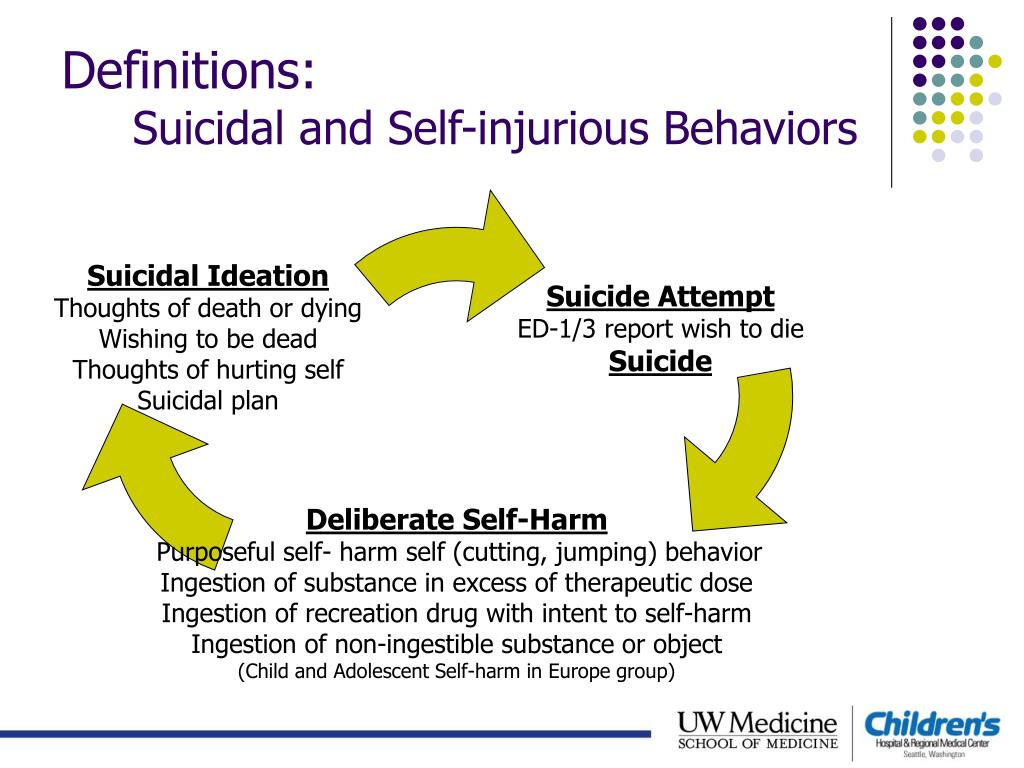However, great care should be taken when using such strategies. Connecting assessment to treatment three types of treatment strategies for socially mediated sib:

PPT Self Injurious Behaviors Trends and Treatments
Increasing activity level may be helpful.

Self injurious behavior treatment strategies. A key consideration is determining the function of sib and selecting treatments based on these functions is Create a special bedroom or space for your child Deep pressure sensory interventions roll therapy ball core progression strategy have been shown to reinforce the behaviors that follow them in children with autism spectrum disorder.
John’s frequency of sib increases over time. Social negative reinforcement (negative reinforcement) •sib allows a person to escape from an activity (for example, math, brushing your teeth) •sib allows a person to avoid a situation that they find aversive. What mental health professionals are.
The biomedical approach of treatment of sib with atypical antipsychotic drugs to reduce the incidence of sib Before the behavior occurs (to prevent it) when the behavior occurs (to stop it and prevent injury) after the behavior occurs (to make it less likely to happen again) A quality behavior support plan should include procedures for what to do:
A practical manual for educators ngoc lan nguyen follow this and additional works at: Forty years ago, little was known about sib. Behavior which is often caused by sensory disturbances (doughty & doughty, 2008).
Most patients on treatment units had diagnoses of schizophrenia spectrum and other. Sib is a multifaceted behaviour that is difficult to understand and treat as the diagnosis varies across individuals. For example, providing a favorite food before the behavior occurs will interfere with or be.
These isolating behaviours may affect children with intellectual impairment, autism or other forms of neurodiversity. This behavior is described in individuals intellectual and developmental disabilities, including those with autism. Recognize that states of arousal can influence self injurious behavior.